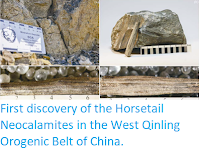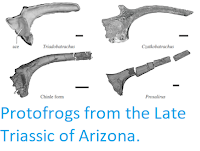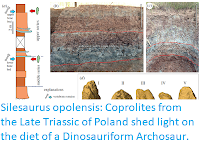The Lepidosaurs are the single largest group of Amniote Vertabrates alive today, with more then 10 000 described species. However, all bar one of these are placed within one of the two subgroups which make up the Lepidosauria, the Squamates, a group which includes the Snakes, Lizards, Amphisbaenians as well as extinct groups such as the Mesozoic Mosasaurs. A second Lepidosaur group, the Rhynchocephalians, is represented today by only a single species, the Tuatara, Sphenodon punctatus, a superficially Iguana-like animal from New Zealand. Although the Tuatara resembles an Iguana, and was initially classified as a Lizard when it was discovered, it differs from Lizards in several important ways, including a fully developed third eye beneath the scales on the top of its head, a double row of teeth on the upper jaw, acrodont dentition (in which the roots of the teeth do not penetrate the jawbone) and an incomplete lower temporal bar (the bone which forms the lower part of the lateral temporal fenestra - opening in the skull behind the eyes, in Diaspids). Rhynchocephalians first appeared in the Middle Triassic, and were the most abundant and diverse group of Lepidosaurs in the Mesozoic, with the largest group of Rhynchocephalians being the Sphenodontians, although the origins of the group are not well understood.
In a paper published in the journal Scientific Reports on 14 August 2019, Annie Hsiou of the Laboratório de Paleontologia at the Universidade de São Paulo, Randall Nydam of the Arizona College of Osteopathic Medicine and Department of Anatomy at Midwestern University, Tiago Simões of the Department of Biological Sciences at the University of Alberta, and the Museum of Comparative Zoology at Harvard University, Flávio Pretto of the Centro de Apoio à Pesquisa Paleontológica da Quarta Colônia at the Universidade Federal de Santa Maria, Silvio Onary, also of the Laboratório de Paleontologia at the Universidade de São Paulo, Agustín Martinelli of the Sección Paleontología de Vertebrados at the Museo Argentino de Ciencias Naturales ‘Bernardino Rivadavia’, and the Laboratório de Paleontologia de Vertebrados at the Universidade Federal do Rio Grande do Sul, Alexandre Liparini of the Laboratório de Pesquisas Integrativas em Biodiversidade at the Universidade Federal de Sergipe, Paulo Romo de Vivar Martínez, Marina Soares, and Cesar Schultz, also of the Laboratório de Paleontologia de Vertebrados at the Universidade Federal do Rio Grande do Sul, and Michael Caldwell of the Department of Biological Sciences and Department of Earth and Atmospheric Sciences at the University of Alberta, describe a new species of Sphenodontian Rhynchocephalian from the early Late Triassic Santa Maria Formation of Rio Grande do Sul State in southern Brazil.
The new species is described on the basis of a single sample from the Linha Bernardino outcrop, located in the outskirts of the Candelária municipality, where about six meters of fine to medium-grained sandstones, intercalated with mudstone layers and conglomerates, are exposed on the side of a ravine. Fossils here tend to occur in association with carbonate concretions. The site is noted for the production of numerous Cynodonts, from a layer dated by the uranium-lead zircon method to be 233.23 million years old. The specimen comes from a layer slightly below the Cynodonts, and is therefore assumed to be Carnian in age (237 to 227 million years old).
Location and stratigraphy interpretation. Geological map (a) of Paraná Basin in South America (upper left) and showing the Santa Maria Supersequence in Rio Grande do Sul state (southern Brazil) (detail). The Sanga do Cabral and Santa Maria Supersequences represent the geographical extent of Triassic strata. The star marks the location of the municipality of Candelária where the specimen here described comes from. Summarized stratigraphic scheme of the Linha Bernardino outcrop (b), type locality of Clevosaurus hadroprodon. Panoramic view of the Linha Bernardino type locality (c). Hsiou et al. (2019).
Zircons are volcanic minerals that form within molten rock as it cools.
Like other such minerals, zircons will incorporate some elements present
in the melt, but not others, notably they will incorporate uranium, but
not lead. This is important because uranium is an unstable element, and
over time undergoes fission, with the uranium atoms breaking down to
produce, amongst other things, lead atoms. This is very useful because
nuclear fission occurs at a steady rate, unaffected by conditions such
as temperature or pressure, so that by comparing the proportion of
uranium to lead within a zircon crystal, the time at which that crystal solidified from a liquid melt can be determined.
The new species is described from a specimen comprising an incomplete right premaxilla, an incomplete right maxilla and right lower jaw in occlusion, and left lower jaw located below these elements, a second incomplete left lower jaw, and a fragment of dentary with three isolated teeth. It is placed in the genus Clevosaurus, which has previously been described from the Late Triassic and Early Jurassic of Canada, Britain and China, and is given the specific name hadroprodon, meaning 'big first tooth'.
Type and referred specimens of Clevosaurus hadroprodon. Photograph (a) and outline (b) of holotype partial skull (MMACR PV-027-T). Photograph (c) and outline (d) of referred partial left dentary (MMACR PV-028-T). Abbreviations: Lt Den, left dentary; Lt Mx, left maxilla; MeG, Meckel’s groove; Pmx, right premaxilla; Pmx Fac, premaxillary facet in maxilla; Rt Den, right dentary; Rt Mx, right maxilla; SB, secondary bone; D.V.Cr., dentary ventral crest; Sym, symphyseal region of dentary. Hsiou et al. (2019).
Clevosaurus hadroprodon has a large, blunt, tusk-like tooth in both the premaxilla and the first tooth position of the dentary, which gives the species its name, as well as an angled, but nearly vertical mandibular symphysis (joint between the two mandibles) and relatively deep dentary. It lacks a gap between the tusk-like tooth and the remaining dentition, a posterodorsal process of the premaxilla, well-developed medial-posteromedial expansion of the posterior dentition, flanges on the teeth, and labially expanded teeth, all features seen in other members of the genus. Importantly Clevosaurus hadroprodon shows acrodont dentition, the earliest known example of this in a Rhynchocephalian discovered to date.
Life reconstruction of Clevosaurus hadroprodon. Jorge Blanco in Hsiou et al. (2019).
See also...
Follow Sciency Thoughts on Facebook.









